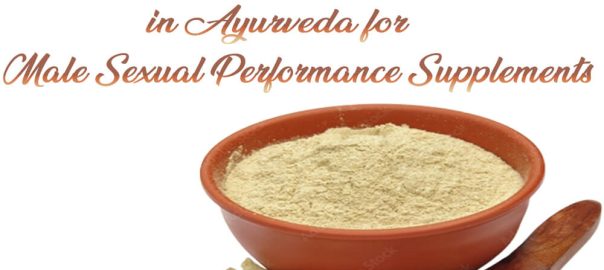
Understanding Ayurvedic Doshas
Tridosha is a concept in Ayurveda, the ancient Indian system of medicine, that explains the three fundamental energies or principles that govern our physical and mental well-being. The three Ayurvedic doshas are Vata, Pitta, and Kapha.
Vata:
Vata is associated with movement and governs breathing, blinking, and the direction of thoughts and feelings. It is considered the lightest and driest of the three doshas and is associated with the air and ether elements. An imbalance in Vata can result in physical symptoms such as constipation, arthritis, insomnia and emotional symptoms like anxiety and fear.
Pitta:
Pitta is related to digestion and metabolism and governs body temperature, hunger, and thirst. It is considered the hottest and sharpest doshas and is associated with the fire element. An imbalance in Pitta can result in physical symptoms such as heartburn, skin rashes, inflammation and emotional symptoms like anger and frustration.
Kapha:
Kapha is related to stability and governs the growth and protection of the body. It is considered the heaviest and most stable doshas and is associated with the earth and water elements. An imbalance in Kapha can result in physical symptoms such as obesity, sinusitis, and fatigue and emotional symptoms like attachment and greed.
In Ayurveda, each individual is considered to have a unique combination of the three doshas, known as their prakriti, which is determined at birth and remains relatively stable throughout life. This Prakriti determines a person’s physical, mental, and emotional tendencies and helps to explain why some people are naturally more prone to certain health conditions than others.
The concept of Tridosha helps to understand the interplay of these energies in the body and how they impact our health. By identifying which doshas are out of balance, Ayurvedic practitioners can recommend specific dietary, lifestyle, and herbal remedies to bring the doshas back into balance and maintain good health.
Tridosha is a fundamental concept in Ayurveda and provides a holistic understanding of our physical and mental well-being. Considering the interplay of the three doshas, Ayurveda offers a personalized approach to maintaining health and preventing premature ejaculation and is a immune system booster.
What does each dosha look like?
In Ayurveda, each dosha is associated with certain physical and mental characteristics. Here is a brief overview of what each dosha looks like:
Vata: People with a dominant Vata constitution tend to be thin and have a light, delicate frame. They have dry, rough skin and are prone to wrinkles. Their hair is typically curly and dry, and their eyes are bright and active. Vata types are often energetic and quick-moving but can also be prone to anxiety and irregular sleep patterns.
Pitta: People with a dominant Pitta constitution tend to have a medium build and are of average height. They have a warm, fiery nature and tend to have good digestion and a strong appetite. Their skin is soft, friendly and may be prone to rashes or acne. Pitta types are often ambitious, focused, and driven but can also be prone to anger and frustration.
Kapha: People with a dominant Kapha constitution tend to be heavy and sturdy. They have smooth, oily skin and thick, straight hair. Their eyes are large and calm, and they tend to have a slow and steady energy level. Kapha types are known for their stability and grounded nature but can also be prone to laziness and attachment.
It is important to note that these are general tendencies and that each person is unique and may exhibit a mix of characteristics from each dosha. In Ayurveda, an individual’s specific combination of doshas is referred to as their prakriti and helps to explain their physical and mental tendencies.
Dosha practices and evidence:
The practices and remedies associated with each dosha in Ayurveda are designed to balance the individual’s doshas and maintain good health and there is ayurvedic medicine for sexual problems as well. Here is a brief overview of some common dosha-specific practices and remedies, along with available evidence:
Vata: Vata-balancing practices include regular routines, warm baths, and gentle yoga poses. Herbs like ashwagandha, liquorice, and ghee are also used to balance Vata. There is limited scientific evidence on the effectiveness of these remedies for balancing Vata. Still, some studies suggest that ashwagandha and liquorice may have anti-anxiety and anti-inflammatory effects, respectively.
Pitta: Pitta-balancing practices include avoiding overly spicy or sour foods, practising self-care and relaxation techniques, and participating in calming activities like meditation and gardening. Herbs like amla, coriander, and turmeric are also used to balance Pitta. Some evidence suggests that these herbs may have anti-inflammatory and antioxidant effects.
Kapha: Kapha-balancing practices include regular exercise, avoiding heavy or oily foods, and participating in activities stimulating the mind and body. Herbs like ginger, cinnamon, and fennel are also used to balance Kapha. Some studies suggest that ginger may have anti-inflammatory and antioxidant effects, while cinnamon may benefit blood sugar levels. Furthermore, one should not use these practices as a replacement for medical treatment, and it is always advisable to consult with a healthcare provider before attempting any new remedies or practices.
When Are Doshas Generated & What Do They Do?
In Ayurveda, doshas are to be generated during conception and continue to develop and influence an individual throughout life.
The three doshas – Vata, Pitta, and Kapha – have different physiological processes and bodily functions.
Vata can control movement and circulation in the body and the nervous system. When in balance, Vata promotes creativity and flexibility, but when imbalanced, it can lead to anxiety, restlessness, and physical discomfort.
Pitta governs metabolism and digestion and its refers to heat, fire, and transformation. When in balance, Pitta supports healthy digestion, good vision, and a clear mind, but when imbalanced, it can cause inflammation, anger, and overheating.
Kapha is responsible for growth, structure, and stability in the body. When in balance, Kapha provides physical strength, immunity, and emotional stability, but when imbalanced, it can lead to sluggishness, congestion, and excess weight.
It is important to note that all three doshas are present in each individual. Still, one or two may be dominant and have a greater influence on an individual’s physical and mental characteristics. An imbalance in any doshas can disrupt the overall balance of the body and mind, leading to health problems. In Ayurveda, restoring balance to the doshas is a key part of promoting health and well-being and an erectile dysfunction cure.
Characteristics Of Each Dosha Dominance:
Each individual have a unique combination of the three doshas – Vata, Pitta, and Kapha – with one or two typically dominant. Here are some general characteristics of each dosha dominance:
Vata dominance: Individuals with a Vata constitution tend to possess quick-wittedness, imagination, and creativity. They are often energetic, lively, and spontaneous but can also be prone to anxiety, fear, and worry. Physically, Vata-dominant individuals tend to be thin and have a light, delicate frame, dry skin, and a tendency towards constipation.
Pitta dominance: Individuals with a Pitta constitution possess a strong intellect, sharp wit, and a high level of drive. They tend to be ambitious, competitive, and have a strong desire for success. However, they can also be prone to anger, frustration, and irritability. Physically, Pitta-dominant individuals tend to have a medium build, good digestion, and warm, fiery nature.
Kapha dominance: Individuals with a Kapha constitution exhibit a stability, grounding nature, and calm demeanor. They tend to be patient, dependable, and affectionate but can also be prone to laziness and attachment. Physically, Kapha dominant individuals tend to have a sturdy build, smooth and oily skin, and a slow and steady energy level.
It is important to note that these are general tendencies and that each person is unique and may exhibit a mix of characteristics from each dosha. In Ayurveda, practitioners refer to an individual’s specific combination of doshas as their “prakriti,” which aids in explaining their physical and mental tendencies. Balancing the doshas through diet, lifestyle, and herbal remedies can promote overall health and well-being in Ayurveda.
Importance of doshas in sex life
In Ayurveda, the doshas play an important role in sexual health and functioning. Each dosha influences different aspects of sexual desire, performance, and satisfaction.
For example, a balanced Vata dosha promotes sexual desire and creativity, while an imbalanced Vata can lead to decreased libido and sexual dysfunction. Pitta dosha refers to sexual vitality and passion, and an imbalanced Pitta can cause overheating and frustration. Balanced Kapha dosha enhances sexual stamina and satisfaction, while an imbalance can result in decreased libido and lethargy.
In addition to the individual doshas, Ayurveda also recognizes the importance of balancing them in couples to enhance their sexual experiences. For example, it can harmonious balance between Vata and Pitta in a couple can increase sexual energy and excitement. In contrast, a balance between Pitta and Kapha can enhance emotional connection and intimacy.
It is important to note that while Ayurveda recognizes the role of doshas in sexual health, it is always best to consult with a healthcare provider for any concerns regarding ed treatment, sexual health and function. Sexual experiences and preferences are individual and cultural; what suits one may not suit another, emphasizing their uniqueness.
In Ayurveda, sexual health and pleasure are important aspects of overall well-being. The doshas play a crucial role in sexual function and desire. The imbalances in the Doshas can contribute to sexual health issues.
Here is some additional information about the relationship between each dosha and sexual health:
Vata: Vata refers to movement and creativity, and a balanced vata can promote sexual desire and imagination. An imbalanced Vata can lead to decreased libido, sexual dryness, and sexual dysfunction. Balancing Vata in sexuality involves grounding practices like massages, warm baths, and relaxation methods to promote stability and calm.
Pitta: A balanced Pitta boosts sexual energy and passion with heat and vitality. An imbalanced Pitta can lead to overheating, frustration, and performance issues. To balance Pitta in sexuality, embrace cooling practices like herbal remedies, cooling foods, and abstaining from stimulants like alcohol.
Kapha: Balanced Kapha promotes sexual stamina and pleasure with stability, grounding, and satisfaction. An imbalanced Kapha can lead to a lack of sexual drive and sluggishness. For sexual balance in Kapha, embrace movement through exercise, spice up your diet, and explore adventurous sexual encounters.
It is important to note that these are general recommendations and that each individual may require a unique approach to balancing their doshas for optimal sexual health. Additionally, it is always best to consult with a healthcare provider for any concerns regarding sexual health and use the best immune booster.










